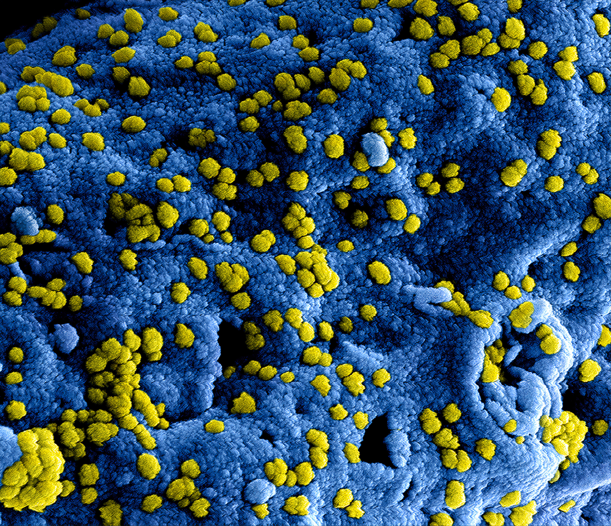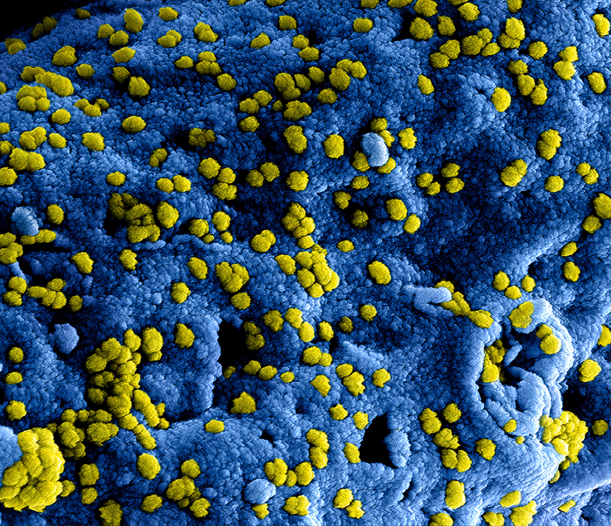By Megan Widdows
Parasites are living organisms that depend on and live off another organism. The organism upon which a parasite is dependent is called the host. Often the presence of a parasite is damaging to the host, using up valuable resources and sometimes transmitting diseases.
When thinking about parasites, you might conjure up images of worm-like creatures that slither through our bodies. Whilst this is one example of what a parasite can be like, there are actually a wide range of much tinier parasitic microorganisms, including bacteria, fungi, protozoa and viruses. Additionally, humans are not the only host for parasites – all living organisms have the ability to be infected with parasites.

Since there are so many different types of parasites co-existing in our ecosystem, hosts are often infected with more than one parasite at the same time. This means there will be interactions between the co-existing parasites. What effect does the presence of one parasite have on another parasite in the same host? Do parasites evolve to become less deadly and co-exist, or does one parasite evolve to be more deadly in a bid to wipe out the other?
These are some of the questions that a group of scientists at the University of Bath and the University of Oxford wanted to answer. They also wondered whether some parasites might even evolve to protect their hosts from other parasites. If they did, then they might end up being beneficial overall, despite usually having a negative effect on their host. This phenomenon is known as host protection and can take two forms. Parasite-conferred resistance occurs when the presence of a parasite in a host reduces the host’s chance of being infected by another parasite. Parasite-conferred tolerance occurs when a parasite is able to reduce the damage caused to the host by another parasite.

The researchers used mathematical modelling to explore the different ways these forms of host protection can evolve. The study built on existing theories that suggest that when two co-infecting parasites are very different from one another, they evolve to become more deadly. This is because these parasites are competing with one another for limited resources (energy, oxygen etc.) within the host.
However, the researchers recognised that this was not the only way that co-existing parasites interact. Similar parasites may instead cooperate with each other, with related parasites sharing resources. This allows them to grow and cause more harm to other parasites and the host.
Some parasites can also influence the amount of damage a co-infecting parasite can do to their host. They do this by producing toxins that harm the co-infecting parasite. Although these organisms are still parasites because they drain energy and resources from the host, their role in outcompeting more dangerous parasites actually provides some protection. This form of protection is actually thought to be a significant part of the host’s defence against parasites and, in some cases, survival rates of a species actually increase when they are infected with a specific parasite.

Host protection is possible because the characteristics of parasites can change depending on their environment. These changes can occur without any changes to their DNA, through a process known as phenotypic plasticity. This allows parasites to adapt to frequent changes in their environment, such as different hosts and the introduction other parasites. Phenotypic plasticity also allows parasites to alter their ability to cause harm to the host or other parasites.
The scientists showed that the ability of parasites to protect the host evolves in different ways, following a variety of different evolutionary trade-offs. An evolutionary trade-off occurs when several different characteristics of an organism are linked in ways that prevents them from all being optimised. The outcome must therefore be a compromise. Different evolutionary trade-offs produce different compromises and, as a results, different mechanisms of host protection.
The scientists also found that parasites that exist in long-lived hosts tend to evolve towards both resistance and tolerance mechanisms. This was also true for parasites that are not highly damaging to their host. This makes sense because in long-lived hosts, there is more time for the parasite, with its comparably short lifespan, to evolve. When the parasite poses little harm to the host, and may even provide protection from other invaders, there is also little incentive for the host to mount an extreme immune response. This is especially true when considering the high energetic cost of immune reactions.
Understanding how co-infecting parasites evolve and interact with one another, and work to protect their host, is important not only for disease control but also for our knowledge of how organisms within communities and ecosystems interact and evolve together. Parasites, it seems, can be allies to their host, which adds to our growing understanding of microorganisms as more than just enemies to good health.
The study mentioned in this article can be found here. A glossary of key terms is provided below.
Tell us what you think about this blog…
We are trying to understand who reads our blogs and why, to help us improve their content.
By completing this survey, you agree that you are over the age of 18 and that your responses can be used in research at the University of Sheffield to evaluate the effect of blogging in science communication.
Glossary
Co-existing parasites – two or more parasites that exist in the same host
Evolutionary trade-offs – a process that occurs when a change in one trait increases fitness results in a simultaneous change in another trait reduces fitness. The organism is prevented from optimising both changes, so the one trait must be sacrificed.
Host – an organism that is infected with or fed upon by a parasite, the host does not benefit and is often harmed by the infection.
Parasite – an organism that lives in or on an organism (its host) and benefits by deriving nutrients from its host
Phenotypic plasticity – the ability of an organism to change their characteristics that help it to adapt to changes in the environment, without any genetic changes.
Parasite-conferred Resistance – protection offered to a host when the presence of a parasite reduces the chance of a second parasite being able to infect
Parasite-conferred Tolerance – protection offered to a host when a parasite is able to reduce the damage caused, or threat to health posed by another parasite
